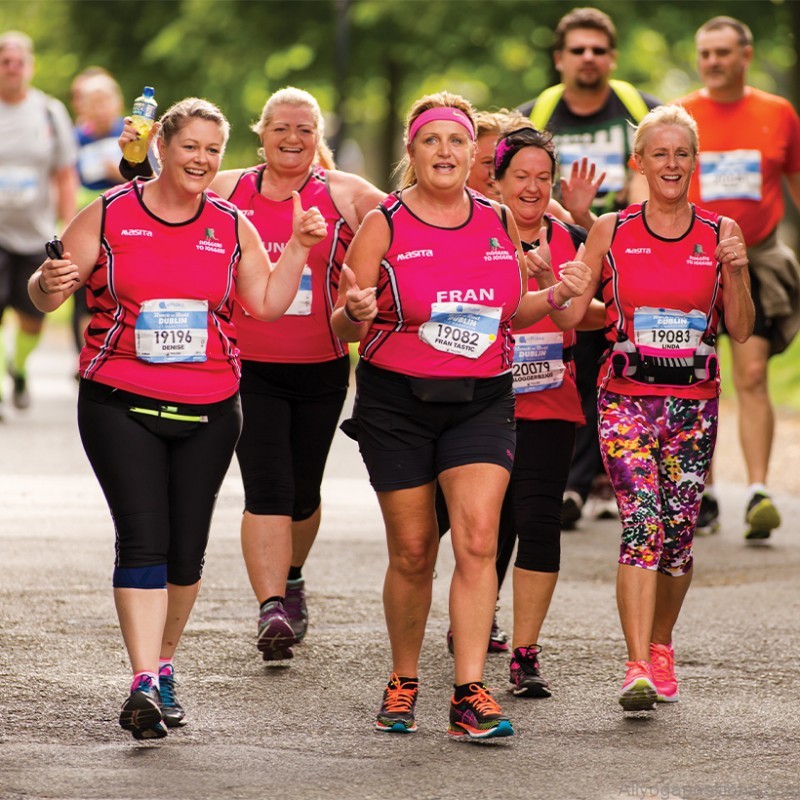Record-breaking ultra-runner Carla Molinaro, who ran from.
Land’s End to John O’Groats, answers your running questions.
I have just started running again after a six-month break and I’m doing well with my fitness, but finding that my lower back and leg muscles ache quite a bit after each run. Will this go away, or is there anything I can do about it?
After a break from running, you will always feel a bit achy and tender for a couple of weeks until your body gets used to the new exercise regime, but it will go away and settle down once your body starts to adapt to the training. Get a foam roller and roll out your lower back. Adding strength and conditioning and focused mobility sessions into your training once a week will also help to ease those aches and pains, as well as making you stronger and helping to stretch everything out.
Golden Rules of Running – Running Tips Photo Gallery
I would like to run a virtual marathon later in the year. Do you have any tips on building up my distance?
I’m currently up to 10K. Goals are good and 10K is a great starting point. In terms of training, only increase your volume by ten per cent a week (until you reach 35K for your long run). Build up your distances for three weeks and on the fourth week drop your distance by 25 per cent to give yourself a rest week. Keep doing this until race day and it will ensure that you progress steadily. Don’t forget to include strength and conditioning and mobility sessions in your programme once a week, to help with injury prevention.
My joints get sore when I run in the winter. Is there anything I can do about this? Do you take joint care supplements, and do you think they can help?
This is very common, especially as it’s getting colder outside. Firstly, dress properly and layer up – that way you can take your layers off as you get warm. Before you start running, do 20 x squats and 20 x lunges on each leg. This will get your muscles and the synovial fluid (which surrounds all your joints) warmed up and ready for you to run, and hopefully ease any soreness you may have. A good supplement to take is vitamin D3 and omega-3. These are great to help keep our bones and joints nice and strong.
I have noticed since I’ve got a bit older that my running pace has got slower. Is there anything I can do about this, or do I just have to accept that I’m not going to be as fast as I used to be?
Unfortunately, as we get older we do get a bit slower, but it doesn’t mean that you will stop being fast overall! If you want to keep as much speed as possible and want to get faster, you have to run fast. Including an interval session and a tempo session into your training plan once a week will help.
CARLA’S MONTH IN TRAINING
I have a very big race at the end of January, so I have been training very hard for this. I have been doing lots of running at the pace I want to race at, which is slightly scary, but it’s a great confidence boost each time a session goes well. I have found a great place to train called Dorney Lake; this is where the rowing took place at the 2012 Olympics, which gives me so much motivation to run fast. The lake has a path surrounding it that is 5K long and is flat and fast to run around.
And a massive bonus, they do a great hot chocolate that I tuck into once I have finished my sessions, which gives me something to look forward to when it starts to get hard. For this race, I have been practicing my race nutrition and have been experimenting with different types of gels, drinks and caffeine supplements. Caffeine has been shown to have a great effect on performance, so it has been fun to practice seeing what works. I found an awesome website called xmiles.co.uk, which has loads of different brands. Testing nutrition is one of the biggest things that runners forget to do and it’s so crucial. Make sure that you practice anything you intend to use on race day before you hit that start line!




